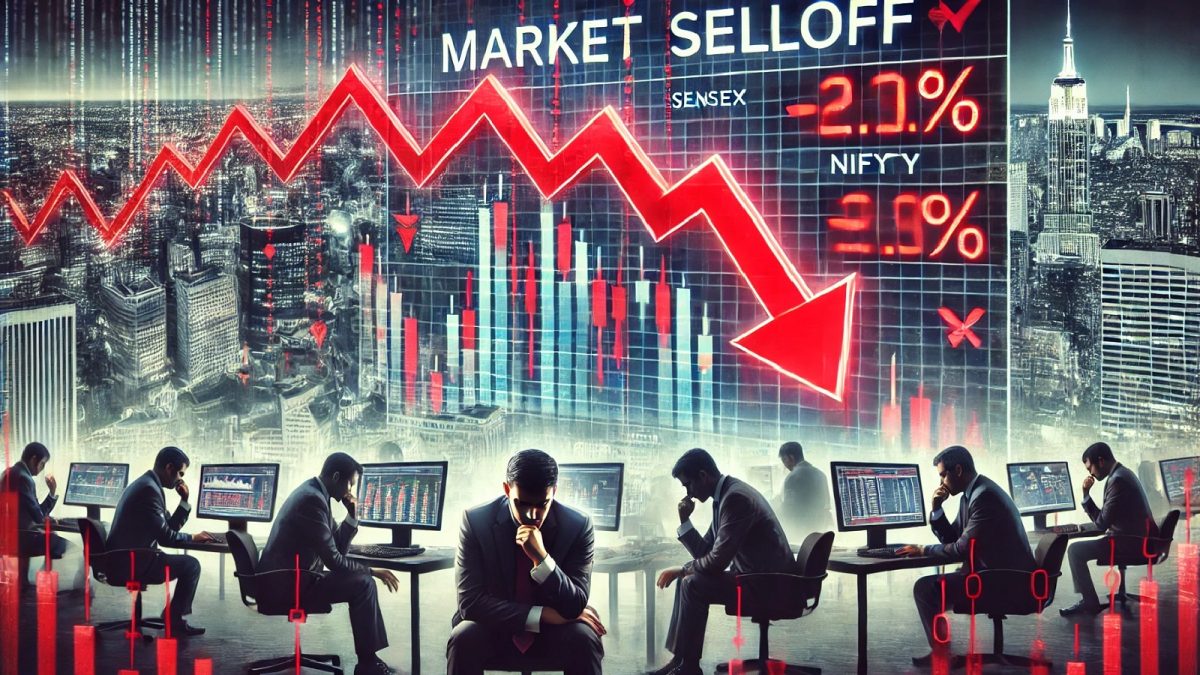
Sensex, Nifty Bleed But Hold Up Better Than Global Peers As Trump Tariffs Trigger Market Rout – News18
Last Updated:
On April 7, both the Sensex and Nifty 50 closed over 3% lower, mirroring a global meltdown—but crucially, fell less than their Asian and European counterparts
Stock Market Crash
Stock Market Crash: Indian benchmark indices suffered their sharpest single-day drop since the post-Lok Sabha election selloff of 2024, as fears of a renewed global trade war rattled investors worldwide. On April 7, both the Sensex and Nifty 50 closed over 3% lower, mirroring a global meltdown—but crucially, fell less than their Asian and European counterparts.
In a bruising Monday session, the Nifty50 plunged as much as 5% intraday, marking its worst single-day performance since June 4, 2024. The dramatic fall triggered flashbacks of previous market shocks, stoking fresh concerns of an imminent bear market.
The BSE Sensex nosedived nearly 4,000 points in early trade, breaching the 71,500 mark, before recovering partially to end 2,227 points lower at 73,138. The rout was broad-based, with Tata Steel and Tata Motors tumbling between 5–7%, while blue-chip giants like Reliance Industries, HDFC Bank, and ICICI Bank fell around 3% each in a session that left few stocks unscathed.
Global Markets Fare Worse
While Indian markets were bleeding, global peers faced a far more severe sell-off. In Asia, Taiwan’s benchmark index was forced to halt trading after a staggering 9.7% crash, while Japan’s Nikkei 225 slid 7.4%, officially entering bear territory. Hong Kong’s Hang Seng Index plunged a massive 13%, becoming the worst performer globally.
European markets weren’t spared either. By mid-session, Germany’s DAX had fallen 6.1%, France’s CAC 40 was down 6.2%, and the UK’s FTSE 100 slipped 4.8%, signaling a continent-wide equity bloodbath. In the U.S., Dow Futures dropped 1,200 points (3.3%), with S&P 500 and Nasdaq Futures down as much as 4%.
Trigger: Tariff War Returns
The global sell-off was sparked by escalating trade tensions between the U.S. and China. After U.S. President Donald Trump imposed a fresh round of retaliatory tariffs, China responded with its own countermeasures, igniting fears of a full-scale trade war that could derail the global recovery.
This sharp escalation sent shockwaves through Wall Street and beyond, with rising concern that an extended tariff war could trigger global stagflation, dampen consumption, and delay investment cycles across economies.
Market Outlook – Analysts’ Take
Analysts warn that this is more than just a knee-jerk reaction. In a note dated April 6, Goldman Sachs economists, led by Jan Hatzius, slashed their 2025 Q4-to-Q4 U.S. GDP growth forecast from 1% to 0.5%, citing rising policy uncertainty and tightening financial conditions. They also raised the 12-month recession probability to 45%, up from 35%.
Back home, analysts at JM Financial struck a slightly more optimistic tone, noting that India’s diversified trade exposure and relatively lower sensitivity to global tariffs may buffer it from the worst of the fallout. However, they cautioned that risks remain, especially around commodity price volatility, goods in transit, and retaliatory trade policies.










